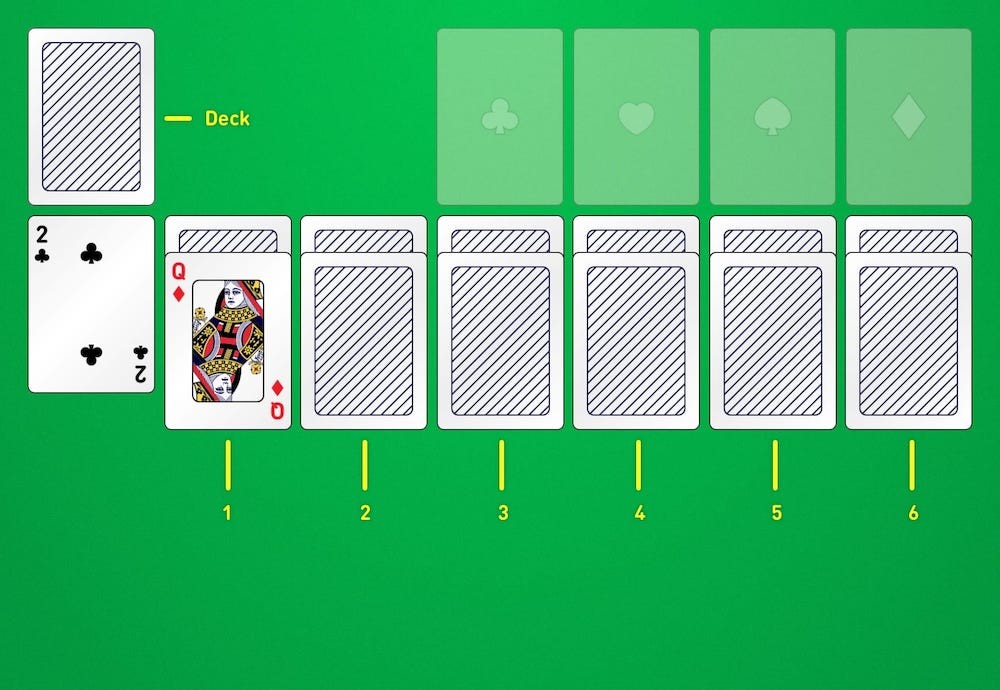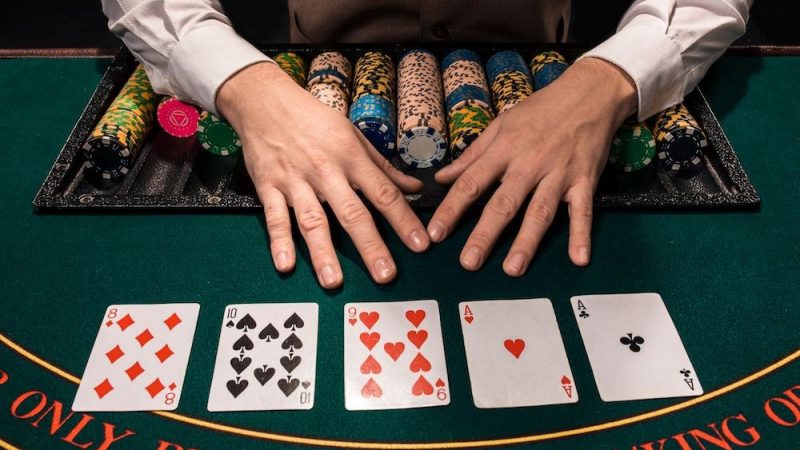Image Source: Pexels
It’s a classic game that has been around for centuries, spanning various cultures and becoming one of the most recognized card games in history. Solitaire is simple to understand but hard to master. It’s challenging, it requires concentration, and it can get pretty addicting. Whether you’re looking for something to keep you occupied on an airplane or a rainy afternoon at home, learning how to play solitaire will prove beneficial. With this ultimate guide on how to play solitaire, you will be able to dig deeper into the rules and strategies of this exciting card game – no matter your skill level! From versions like Klondike and Spider solitaire to a detailed explanation of variations such as Freecell and Pyramid; we’ve got you covered! If you are interested to play card games, check the most popular card games in the UK!
What is Solitaire?
Solitaire is a card game where players attempt to place cards from a shuffled deck into a house-shaped layout. When a card is played, it is placed on the layout above the natural card rank (Aces are the first card in the layout, 2s are the second, etc.). If two or more cards are played at the same time, they are placed one above the other (a pair of 7s is placed as 7-7). The game is won when all cards are played off the layout. When talking about how to play solitaire, it’s important to note that the game takes many forms. There are different variations of the game and different ways to play the same variation. The most common form is known as Klondike or, more generally, Classic Solitaire. This variation features a single house-shaped layout of 13 cards, with the goal being to play all cards off the layout.
Rules of Solitaire
- Object: The object of the game is to remove all cards from the layout.
- Layout: The layout, or tableau, consists of a single tableau column consisting of 13 cards in the center of the playing surface.
- Stock: The Stock is the draw pile that is initially dealt with 3 cards face down to the left of the layout. – Discard Pile: The Discard Pile is the pile to the right of the layout where cards are discarded.
- Foundations: The bottom of the layout is the foundation, where 4 foundation piles are dealt with 7 cards each (all cards in the layout are dealt here when no other cards are available).
- House: The house is the top of the layout (also called the crown), where the topmost card is available for play.
- Tableau: The cards in the tableau are the cards that are not in the foundation or the house.
- Stacking Rules: The following rules apply to card play: You can play any card that is one rank higher than the topmost card of the tableau; You can play any card that is one rank lower than the top of the house; You can play a group of cards if they are in sequence (e.g. a group of three 6s); You can play a group of cards if they are in sequence and one rank higher than the topmost card of the tableau (e.g. a group of three 6s and a 4); You can play a group of cards if they are in sequence and one rank lower than the top of the house (e.g. a group of three 6s and a 2).
How to Play Classic Solitaire (Klondike)
Klondike is a type of solitaire in which the player attempts to move all cards to the foundation. The game is played with a single deck of 52 cards. The player begins by dealing 13 cards from the deck and arranging them in a house-shaped layout in the center of the playing area. For the rest of the game, the player attempts to move the cards from the layout to 4 foundation piles at the bottom of the layout by suit. Cards can be moved to the foundation when they are one rank lower or one rank higher than the topmost card in the foundation. When no other cards are available to move to the foundation, the game ends, and the player wins.
How to Play Spider Solitaire
Spider Solitaire is a type of solitaire in which the player attempts to move all cards to the foundation. The game is played with a single deck of 52 cards. The player begins by dealing 7 cards from the deck and arranging them in a house-shaped layout in the center of the playing area. For the rest of the game, the player attempts to move the cards from the layout to the foundation by suit. Cards can be moved to the foundation when they are one rank higher than the topmost card in the foundation. When no other cards are available to move to the foundation, the game ends, and the player wins.
Other Solitaire Variations You Can Learn to Play
- Double Klondike: This variation of Klondike Solitaire has a single house-shaped layout of 26 cards. It is won when all cards are moved to the foundation.
- Three Blind Mice: This variation of Klondike Solitaire has a single house-shaped layout of 24 cards. It is won when all cards are moved to the foundation.
- Grandfather’s Clock: This variation of Klondike Solitaire has a single house-shaped layout of 24 cards. It is won when all cards are moved to the foundation.
- Baker’s Dozen: This variation of Klondike Solitaire has a single house-shaped layout of 13 cards. It is won when all cards are moved to the foundation.
- Freecell: This variation of Klondike Solitaire has a single house-shaped layout of 8 cards. It is won when all cards are moved to the foundation.
- Pyramid: This variation of Klondike Solitaire has a single house-shaped layout of 8 cards. It is won when all cards are moved to the foundation.
- Sir Tommy: This variation of Klondike Solitaire has a single house-shaped layout of 12 cards. It is won when all cards are moved to the foundation.
- Eight Off: This variation of Klondike Solitaire has a single house-shaped layout of 8 cards. It is won when all cards are moved to the foundation.
- Crazy Eights: This variation of Klondike Solitaire has a single house-shaped layout of 8 cards. It is won when all cards are moved to the foundation.
- Spanish Patience: This variation of Klondike Solitaire has a single house-shaped layout of 7 cards. It is won when all cards are moved to the foundation.
Conclusion
The game of solitaire has been around for a long time. It started off as a card game played by nobles in the French court, and then it evolved into a popular pastime for many North American families throughout the early 20th century. Today, it has evolved into many different variations and can be played on computers or with physical cards. Whether you prefer classic solitaire or spider solitaire, there are various ways you can play the game. You can play it alone or with friends. You can play with physical cards or on your computer. Playing solitaire is a great way to pass the time, exercise your brain, and have fun!





